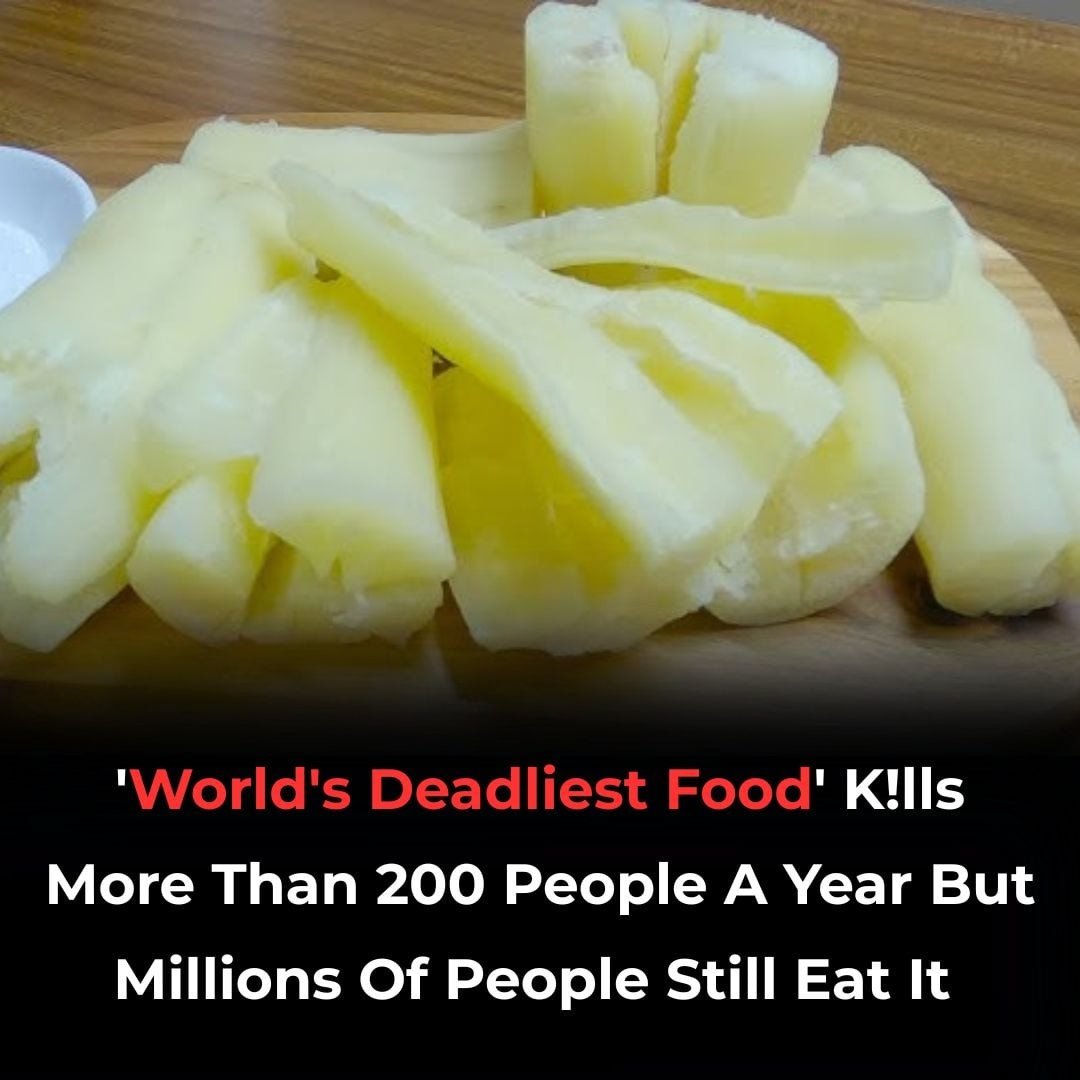It’s a stark paradox: a single food sustains nearly half a billion people but is also responsible for hundreds of deaths each year. This title of the « world’s deadliest food » belongs to cassava, a starchy root vegetable that is a dietary staple across Africa, South America, and Asia.
While it looks like a harmless, rugged yam, cassava carries a natural defense mechanism that can be lethal if not properly handled.
🌱 What is Cassava?
Also known as yuca or manioc, cassava is a drought-resistant root crop originating in South America. It’s the third most important source of carbohydrates in the tropics, after rice and maize, and is incredibly versatile. It can be boiled, fried, mashed, and is the key ingredient in tapioca.
☠️ Why is it So Dangerous?
The danger lies in cassava’s natural production of cyanogenic glucosides—compounds that can release hydrogen cyanide (a potent toxin) when the plant’s cells are damaged.
The Toxin is Widespread: The highest concentrations are found in the leaves, peel, and stems, but the flesh of the root also contains varying levels.
Two Main Types: There are « sweet » and « bitter » varieties. Bitter cassava has much higher levels of these cyanogenic compounds and requires more intensive processing.
If consumed without proper preparation, this cyanide can cause acute poisoning, leading to death, or contribute to chronic conditions like Konzo.
